Most of us have heard organ grinders at county fairs, exuberant organ flourishes at baseball games, and even sinister-sounding organs in theatres (think Phantom of the Opera). But relatively few people have heard an actual massive pipe organ played to its fullest virtue in a church.
A music teacher in my youth once told me that the coordination it took to play a large pipe organ was equivalent to the skills needed by an astronaut. It’s a machine that only the most talented of musicians can master.
It requires superior hand-eye and even -feet coordination as well as the ability to play on multiple keyboards at once while also pulling out stops, pushing buttons, and turning pages. All of this is in addition to the actual skill needed to play the music!
The Command Center
- Three or four keyboards, called manuals, i.e., for the hands (with lots of little buttons arranged directly below the keys),
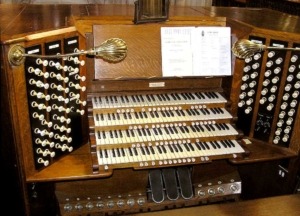 A large, wide pedalboard for the feet (with numerous pedals and knobs to magnify and change sounds),
A large, wide pedalboard for the feet (with numerous pedals and knobs to magnify and change sounds),- Banks of dozens of buttons on either side of the keyboards (called stops because they stop the air from going through the pipes that are not playing), and also
- A stand at eye level to hold the music being played.
(Incidentally, the largest organ in the world has seven keyboards and more than 1200 stops on either side of the console—not to mention 33,127 pipes! More on this below.)
The pipe organ is the largest musical instrument in existence and it is for the organist almost a 180-degree experience of musical complexity. Even if you’ve mastered the music, you still need to master the machine. Hence, my teacher’s comment about the coordination of an astronaut.
There is nothing quite as impressive as watching a skilled organist bring a monster organ to life and make it sing up to its fullest voice. It’s literally man-made thunder.
Theology of a Machine
And right there you are introduced to the theology of the pipe organ. It is the king of musical instruments because it echoes and re-presents all the sounds of creation. And when used for the purposes of sacred music, it becomes a magnificent voice of the redeemed world in the worship of its God.
In this, I am simply reflecting the words of Pope Benedict from a speech he gave when he dedicated a new pipe organ for Regensburg University in Germany in 2006:
The organ has always been considered, and rightly so, the king of musical instruments, because it takes up all the sounds of creation…and gives resonance to the fullness of human sentiments, from joy to sadness, from praise to lamentation. By transcending the merely human sphere, as all music of quality does, it evokes the divine. The organ’s great range of timbre, from piano through to a thundering fortissimo, makes it an instrument superior to all others. It is capable of echoing and expressing all the experiences of human life. The manifold possibilities of the organ in some way remind us of the immensity and the magnificence of God.
These insights are quite astonishing. The Holy Father went on to note that the coordination of all the sounds in an organ composition reflects the human voices and personalities in the life of the Church.
Theoretically, they all work together in harmony and synchronization for the greater good of the whole. That unity of purpose makes for the Church’s pure worship of its Creator and Lord. Theoretically is the key word here!
Music Machine Par Excellence
 But the point about the human dimension behind the instrument is well taken. Making music in this machine is an equally delicate effort to pull off, mechanically. Think about what it takes to make an organ function on many levels:
But the point about the human dimension behind the instrument is well taken. Making music in this machine is an equally delicate effort to pull off, mechanically. Think about what it takes to make an organ function on many levels:
- Someone first has to build the organ and make sure all the different types of sounds are represented in the ranks of pipes.
- The wind that flows through the pipes requires not just a musician but an engineer who manages a mechanism for keeping sufficient air pressure to create the sound and making sure those pipes operate precisely with the movement of the keys.
- Even before the organist sits on the bench, someone needs to tune the pipes so that they all sing in harmony!
- One master organ builder noted that his team worked 12 hours a day, 6 days a week, for over two months to tune the 4,300 pipes of a mid-sized organ.
- And of course, individuals of great skill have to compose the music and then play it.
Some form of the pipe organ has been around since the Greeks invented the air-pumping system in the third century BC. In fact, the word organ comes from the Greek organon, meaning “instrument” or “tool”.
It may not be evident at first glance, but the pipe organ was easily the most complex human machine ever built prior to the modern age. I suspect that most of these magnificent engines of music will also be around and working long after our electronic gadgets have been tossed onto the scrap heap of history.
The human analogy—a community of different voices all 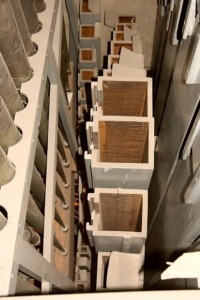 working in coordination—is apt on many levels.
working in coordination—is apt on many levels.
Like every gathering of humans, you’ll find that the organ’s pipes also come in all shapes and sizes. Well, I should say that the shapes of the pipes are pretty much limited to two: round and square.
But the sizes range from a tiny half-inch pipe to a gigantic sixty-four foot pipe, which is installed in only two organs in the world (one of which is in the Atlantic City Board Walk organ featured two of the videos below. That single pipe itself weighs 3,350 pounds and is 30” square—wow!)
The girth of the pipes also varies throughout: the smallest is the diameter of a thin pencil while the largest can be the size of a 55-gallon drum. The 32-foot pipe, for example—which is standard in the largest pipe organs, is so wide that it emits a sound inaudible to the human hear. Its sound can only be felt –yikes!
One expert described it as similar to the rump-rump-rump sound of a helicopter that you can feel more than hear. An excellent image!
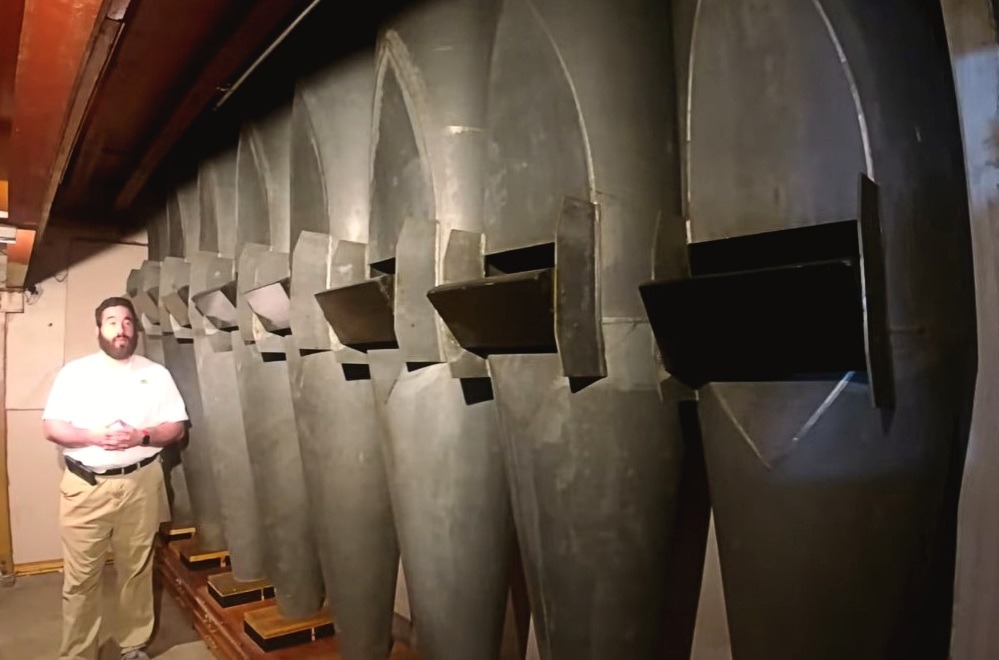
[From the video: A Virtual Tour of the Largest Pipe Organ in the World]
The experts also say that every pipe organ has its own unique personality. Each one has to be built from scratch and is therefore different from every other instrument. There is no cookie cutter design from which pipe organs can be made.
Every Sound Imaginable
We don’t have space here to go into all the technicalities of the pipes, which create the diversity of sounds, but here are the general types you will see if you ever walked into the area behind an organ:
- Round and square pipes made of pine or fir wood for the reed instruments;
- Lead, tin, and zinc pipes for the flute, oboe, and clarinet sounds;
- Other wooden pipes that create the sounds of string instruments; and
- Tin and zinc pipes for the brass instruments (horns and trumpets).
- The Royal Albert Hall in London even has a bass drum in the middle of all its pipes, which can be struck with a mallet by pushing a key.
These pipes can create every sound imaginable at the hands of a skilled musician. And the musical effort can be loads of fun too. One organist described the workings of a huge pipe organ this way: “It’s basically is a big box of toys!”
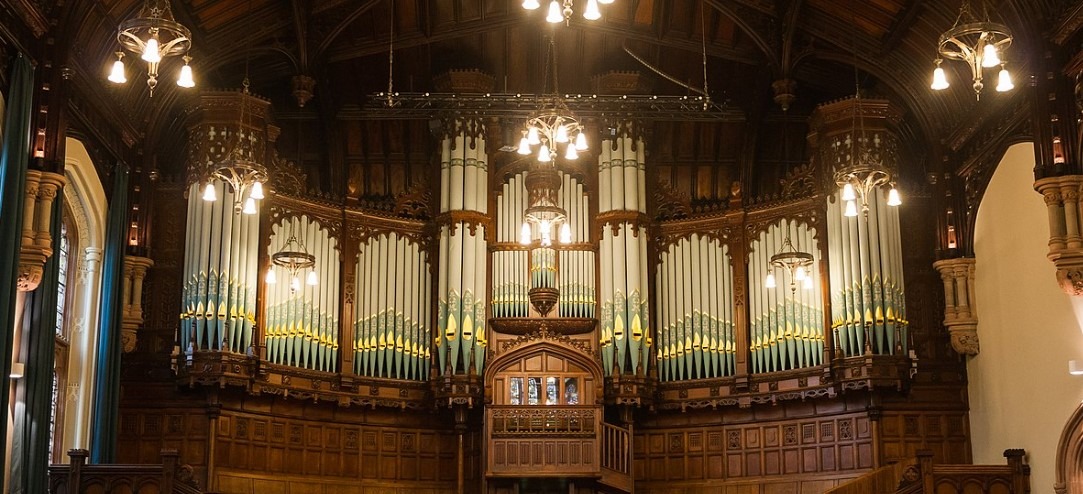
A Forest of Pipes
But be careful how you interpret the array of pipes you see in the impressive displays high up in church balconies.
These are just the window dressing of the full organ, usually just a few of the larger flute or horn pipes that are placed in symmetrical arrangements on the outside for show. They can be immensely beautiful, but they are not the full pipe organ, by any means.
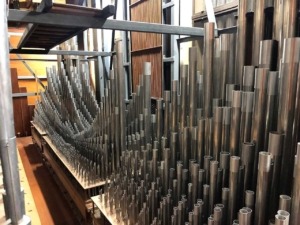 The real work of creating the organ’s sound is all done behind the scenes like good stage hands whose invisible work enhances the performance of the actors on stage.
The real work of creating the organ’s sound is all done behind the scenes like good stage hands whose invisible work enhances the performance of the actors on stage.
As you might imagine, thousands of large and small pipes occupy quite a lot of space and they have to be somewhere, which is usually in a chamber behind the console where the organist sits.
When you enter that area, you see the full extent of the organ pipes arrayed in their various ranks. Walking through the narrow passages between the ranks of pipes is something akin to walking down the pathways of a small forest. Just don’t do it when the organist is blasting away at any composition of Johann Sebastian Bach!
(The fascinating video of Royal Albert Hall below shows two people walking through such a forest of pipes and explaining what they see. The organ has 9,999 pipes and is absolutely amazing!)
Beauty and the Bach
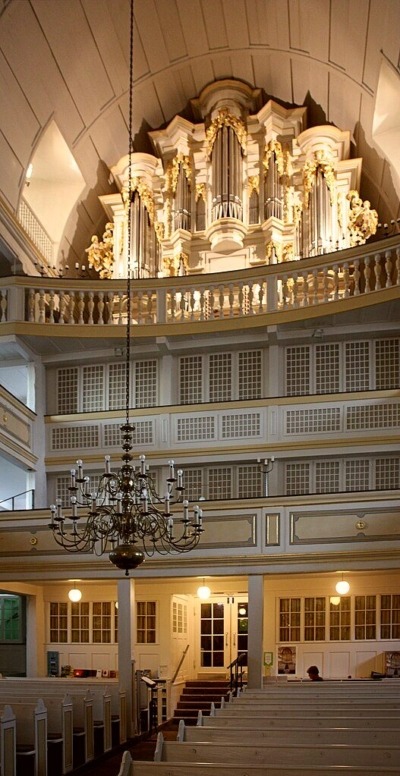 Johann Sebastian Bach (1685-1750) was by far the greatest musician of his day. His instrument of choice was the harpsichord, but his instrument of work was the pipe organ because he was a church organist for his entire career.
Johann Sebastian Bach (1685-1750) was by far the greatest musician of his day. His instrument of choice was the harpsichord, but his instrument of work was the pipe organ because he was a church organist for his entire career.
At right is the organ in the church of his first assignment in Thuringia, Germany—it is 3 stories up!
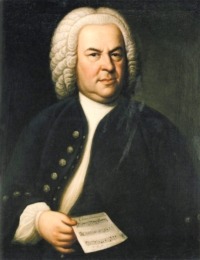 In the 1700s there was no way to make a recording of his music, but one contemporary wrote that “he played like fire”!
In the 1700s there was no way to make a recording of his music, but one contemporary wrote that “he played like fire”!
My own musical teacher, whom I mentioned above, said that Bach would play his magnificent organ compositions so robustly that people complained to the pastor that they found it impossible to pray after the services! (That’s a problem I’d like to have in our churches today.)
Historian Paul Johnson notes that Bach was the hardest working of all the great musicians of history. He probably composed over 1700 pieces of music in his lifetime.
Concerning Bach’s particular genius for music, Johnson simply says, “the man was a copious, gushing, unceasing fountain of creativity” (The Creators, 86). And indeed, creativity is a true sacred window reflecting our wondrous Creator.
Transcendence
 To boil the pipe organ down to its most important dimension, we have to return to Pope Benedict’s insights. From a human point of view it is an impressive creation, but the purpose of a church organ is deeply spiritual: to inspire and lift us up so that our hearts can “transcend the merely human sphere.”
To boil the pipe organ down to its most important dimension, we have to return to Pope Benedict’s insights. From a human point of view it is an impressive creation, but the purpose of a church organ is deeply spiritual: to inspire and lift us up so that our hearts can “transcend the merely human sphere.”
It inspires such transcendence by its amazing mechanical complexity, the beautiful symmetry of its pipes, the diversity of its sounds, and of course by its power to send a chill up your spine when played to its fullest grandeur.
If you doubt what I mean, listen to even a few minutes of Bach’s Tocatta and Fugue in D Minor in the video below, and you’re likely to have an experience of transcendence!
Featured Videos
The World’s Largest Pipe Organ Explained (2:18)
Bach’s Tocatta and Fugue in D Minor on the Atlantic City Boardwalk Organ (9:06)
Walking INSIDE the Royal Albert Hall Organ – 9,999 pipes! (7:31)
———-
Photo Credits via Wikimedia: Feature photo, Altenberg Abbey Church (Uoaei1); Mormon Tabernacle (Public Domain); Bridegwater Hall (Ardfern); Angel playing the organ, Ghent Altarpiece (Public Domain); Bach (Elias Gottlob Haussmann); Bach Organ (Dguendel); Derry Guildhall (Andreas F. Borchert); 4-Manual Console (Arpingstone); Square Pipes (Ken Heaton); Round Pipes Sydney Opera House (Sophistoche); Glass Pipes (Xaver Wilhelmy); Moravian Church (Bestbudbrian); Igreja da Misericordia (Michael Gaylard).
[Note: This article is a reproduction of the Sacred Windows Email Newsletter of 9/22/24. Please visit our Newsletter Archives.]
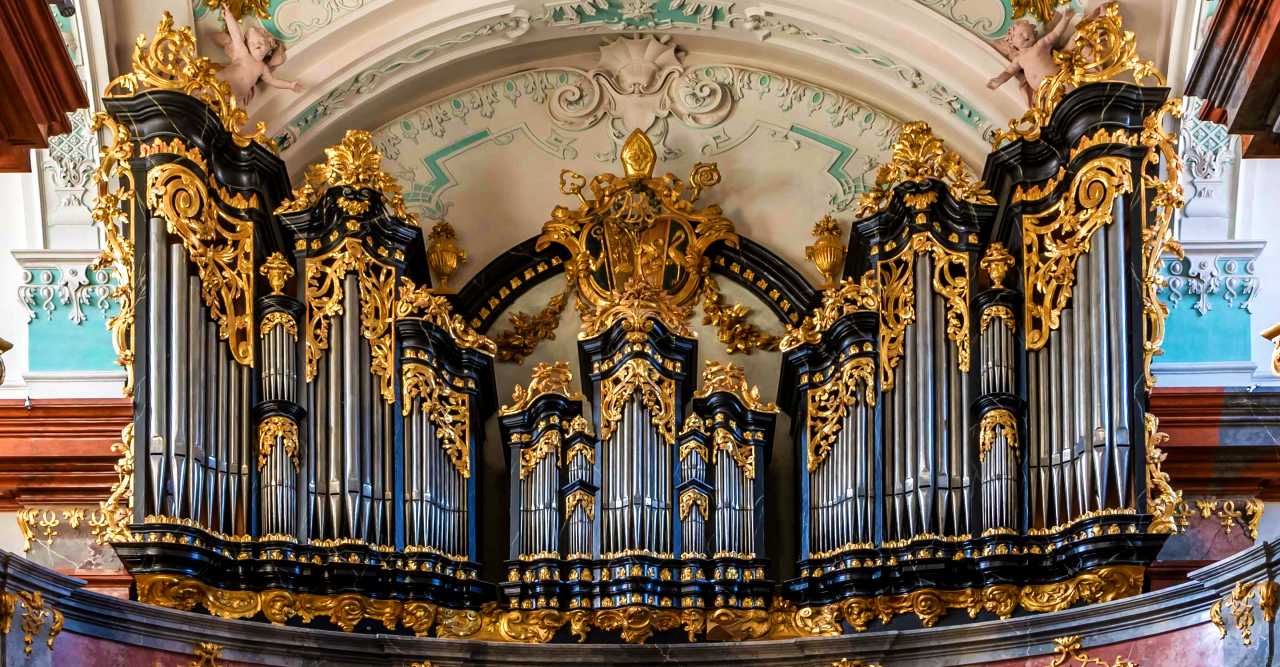
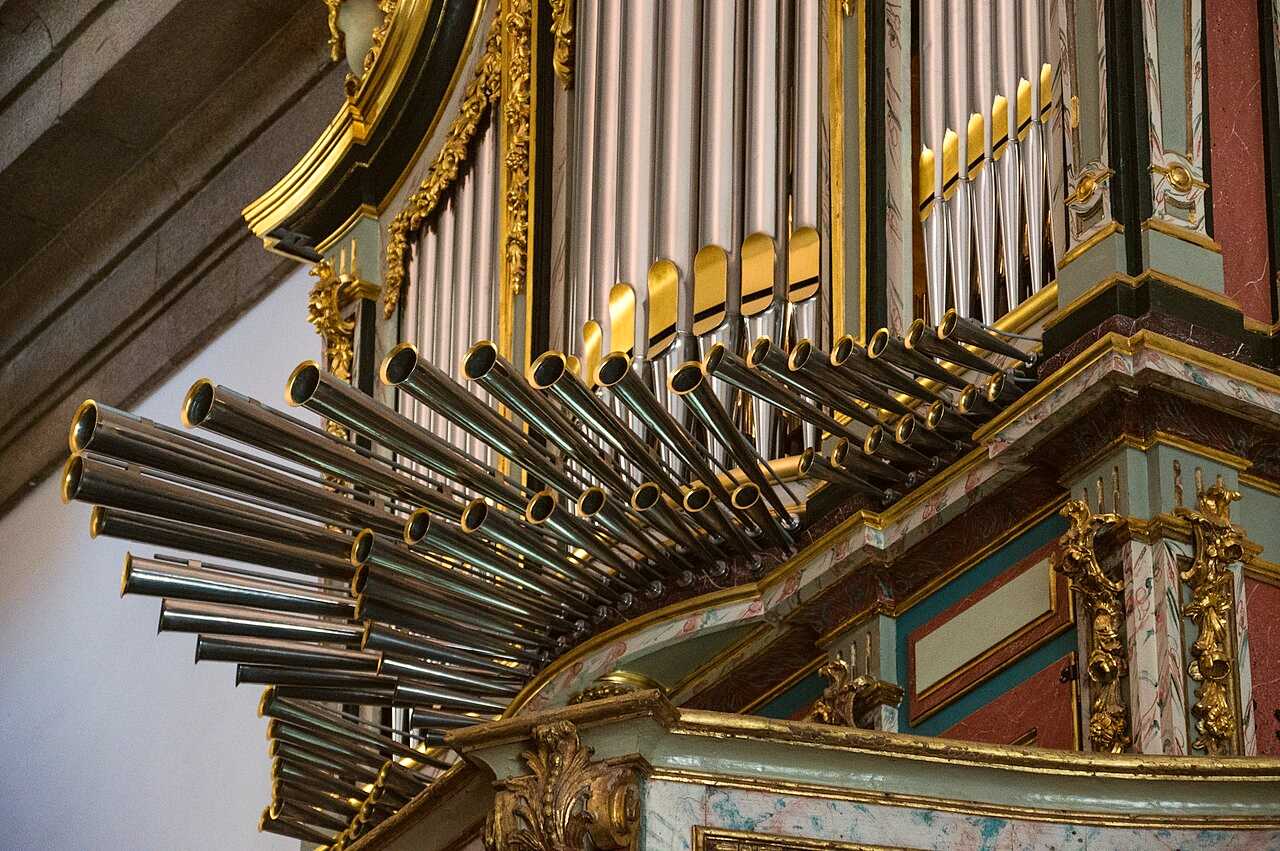
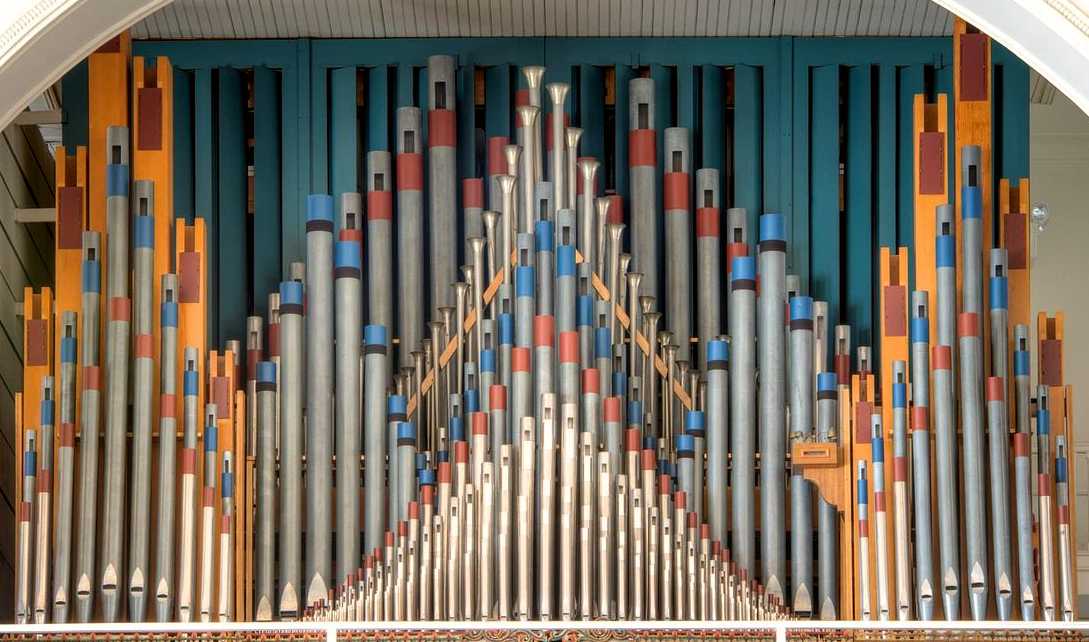
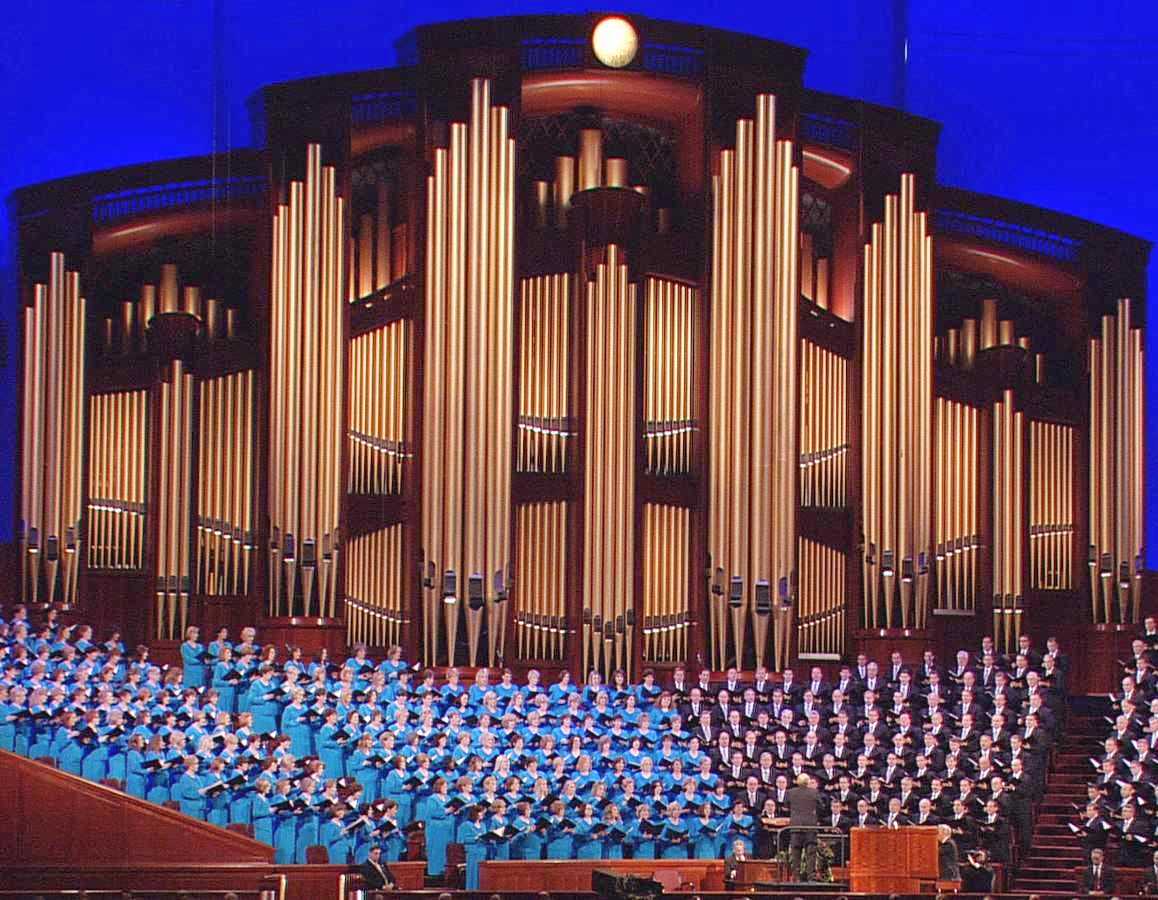
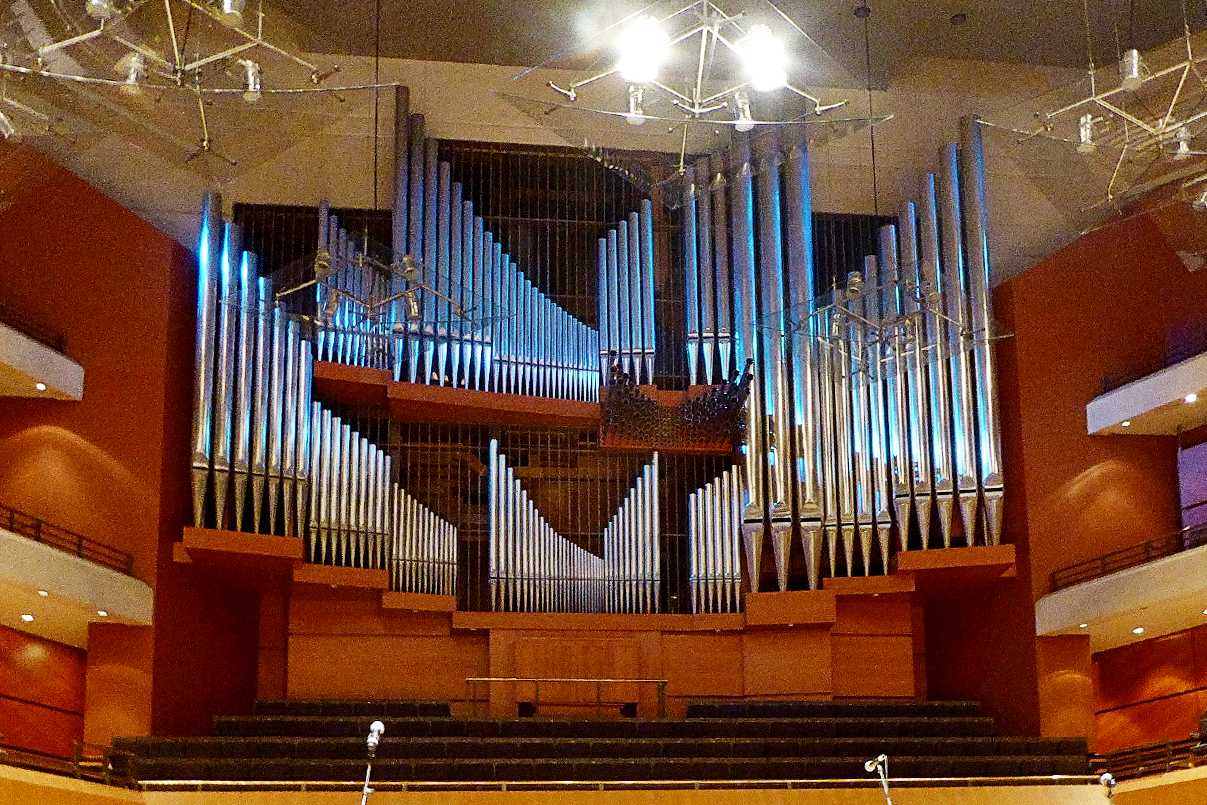



Leave A Comment